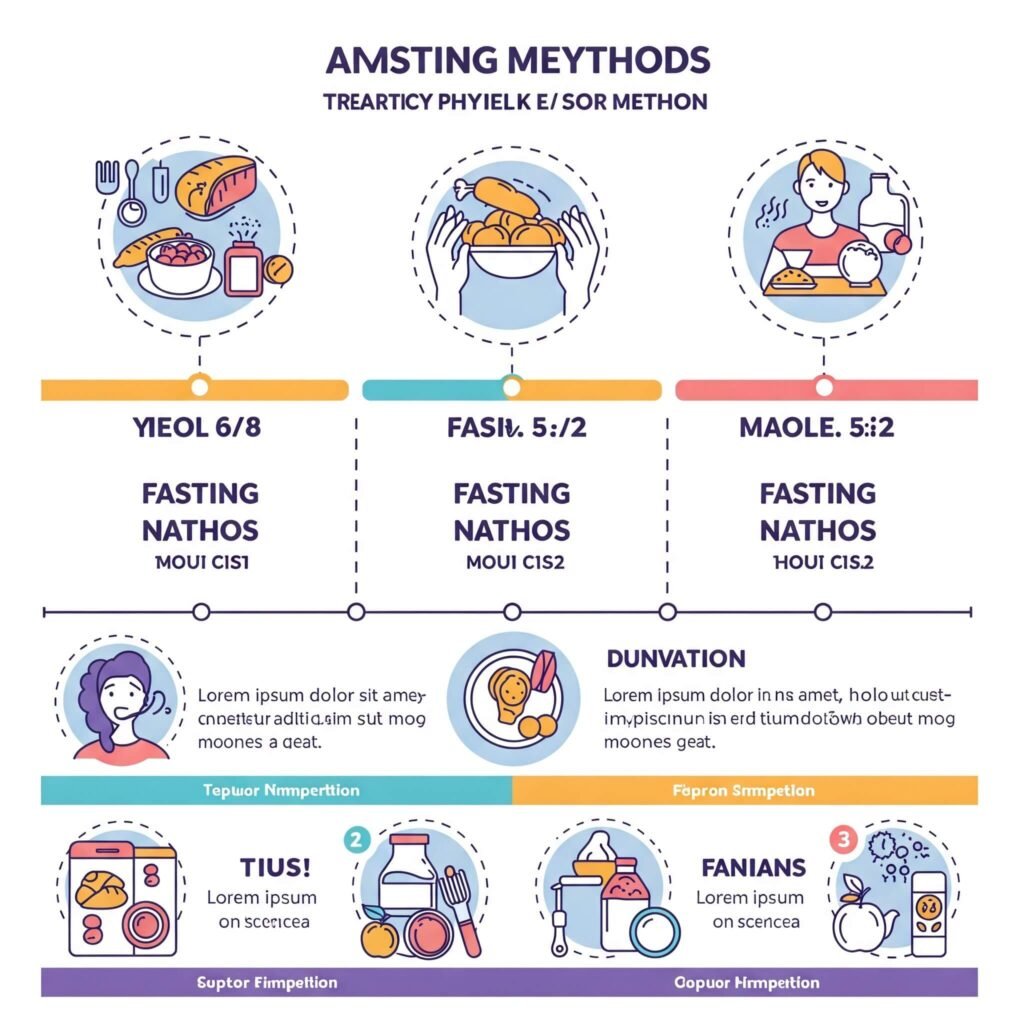Intermittent Fasting: The Science Behind This Trending Diet Revolution

Intermittent fasting isn’t just another diet fad—it’s a science-backed lifestyle shift that’s transforming how millions approach health and wellness. By cycling between periods of eating and fasting, this trending diet promises benefits like weight loss, improved metabolism, and even a sharper mind. But what’s the science behind intermittent fasting, and why is everyone talking about it? In this guide, we’ll break down the research, benefits, and practical tips to help you decide if this diet trend is right for you.
What Is Intermittent Fasting?

Intermittent fasting (IF) is an eating pattern that alternates between fasting and eating windows. Unlike traditional diets that focus on what you eat, IF emphasizes when you eat. Popular methods include:
- 16/8 Method: Fast for 16 hours, eat within an 8-hour window (e.g., 10 AM–6 PM).
- 5:2 Diet: Eat normally for 5 days, restrict calories (500–600) on 2 non-consecutive days.
- Alternate-Day Fasting: Alternate between fasting days and regular eating days.
According to a 2020 study in The New England Journal of Medicine, intermittent fasting can improve metabolic health and support weight loss. But how does it work?
The Science Behind Intermittent Fasting
Intermittent fasting taps into your body’s natural processes to unlock health benefits. Here’s what happens when you fast:
Boosts Autophagy
Fasting triggers autophagy, your body’s cellular cleanup process. During autophagy, cells remove damaged components, promoting longevity and disease prevention. A 2016 study in Nature linked autophagy to reduced inflammation and improved immunity.
Improves Insulin Sensitivity
Fasting lowers insulin levels, helping your body use stored fat for energy. This improves insulin sensitivity, reducing the risk of type 2 diabetes. Research from the University of Illinois found that intermittent fasting improved insulin sensitivity by up to 30% in prediabetic individuals.
Supports Weight Loss
By limiting eating windows, intermittent fasting naturally reduces calorie intake. Combined with fat-burning during fasting, this leads to sustainable weight loss. A 2017 meta-analysis showed IF participants lost 4-10% of their body weight over 8 weeks.
Enhances Brain Health
Fasting increases brain-derived neurotrophic factor (BDNF), a protein that supports cognitive function and protects against neurodegenerative diseases. A 2019 study found IF improved memory in animal models.
Why Is Intermittent Fasting So Popular?

Intermittent fasting’s appeal lies in its simplicity and flexibility. Unlike restrictive diets, IF doesn’t require counting macros or cutting out food groups. It’s also backed by celebrities like Hugh Jackman and Halle Berry, who swear by its benefits for fitness and mental clarity. Social media platforms like X are buzzing with #FastingSuccess stories, amplifying its popularity.
Benefits of Intermittent Fasting
Here’s why intermittent fasting’s is more than a trend:
- Sustainable Weight Loss: Reduces calorie intake without feeling deprived.
- Improved Heart Health: Lowers blood pressure, cholesterol, and triglycerides.
- Enhanced Mental Clarity: Boosts focus and productivity during fasting periods.
- Anti-Aging Potential: Autophagy may slow cellular aging.
- Better Blood Sugar Control: Reduces risk of diabetes.
How to Start Intermittent Fasting
Ready to try intermittent fasting’s? Follow these tips:
- Choose Your Method: Start with the 16/8 method for simplicity.
- Ease Into It: Begin with a 12-hour fast and gradually increase.
- Stay Hydrated: Drink water, black coffee, or herbal tea during fasting periods.
- Eat Nutrient-Dense Foods: Focus on whole foods like vegetables, lean proteins, and healthy fats.
- Listen to Your Body: Stop if you feel unwell and consult a healthcare professional.
Real-World Example: Sarah, a 34-year-old teacher, started the 16/8 method and lost 15 pounds in 3 months. She says, “I feel more energized, and my cravings for junk food are gone!”
Potential Risks of Intermittent Fasting’s
While intermittent fasting’s is safe for most, it’s not for everyone. Potential risks include:
- Hunger and Fatigue: Especially during the adjustment phase.
- Not Suitable for Some Groups: Pregnant women, people with eating disorders, or those with certain medical conditions should avoid IF.
- Overeating Risk: Some may overcompensate during eating windows.
Always consult a doctor before starting, especially if you have health concerns.
Conclusion: Is Intermittent Fasting’s Right for You?
Intermittent fasting is more than a diet trend—it’s a science-backed approach to health that offers weight loss, better metabolism, and mental clarity. By understanding the science and starting slowly, you can harness its benefits. Ready to give intermittent fasting a try? Share your experience or questions below!
Call-to-Action: Want to learn more? Check out our guide to healthy meal planning to complement your fasting journey.
































